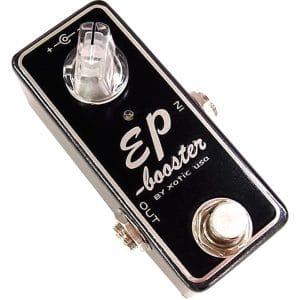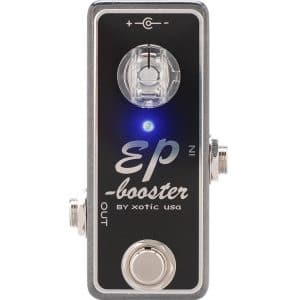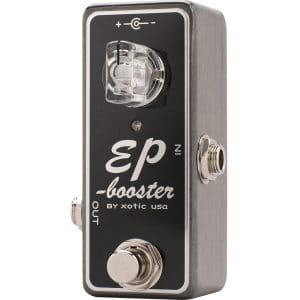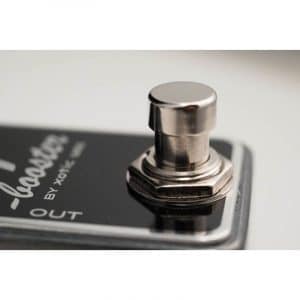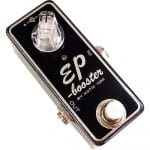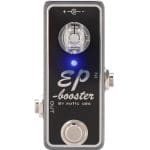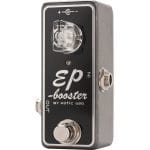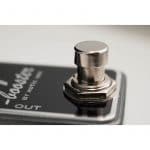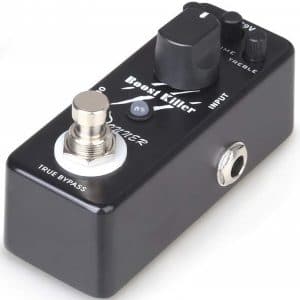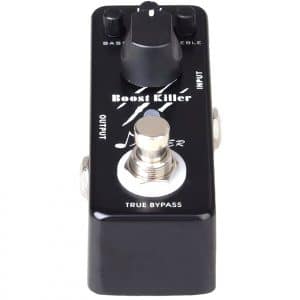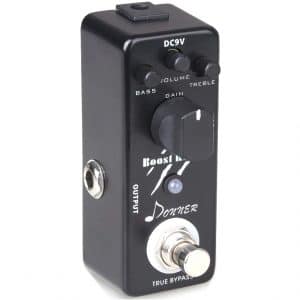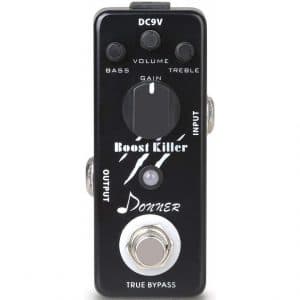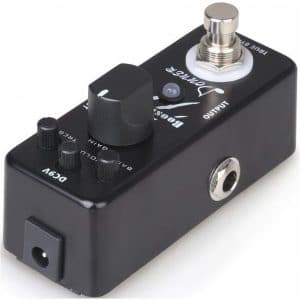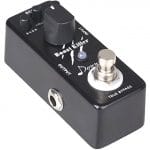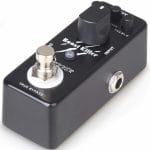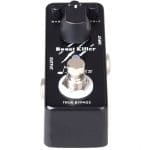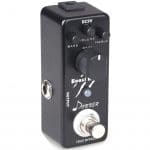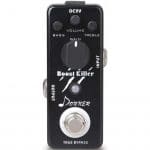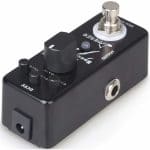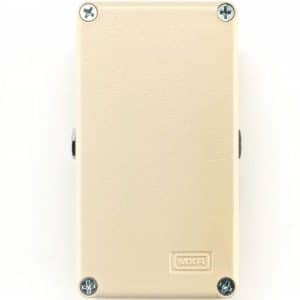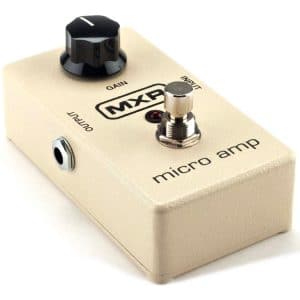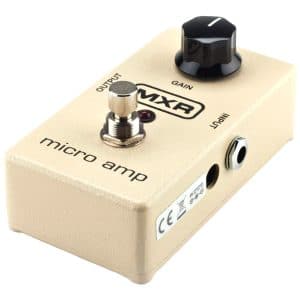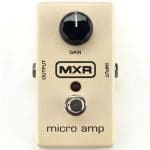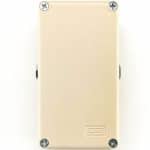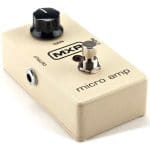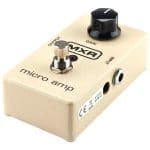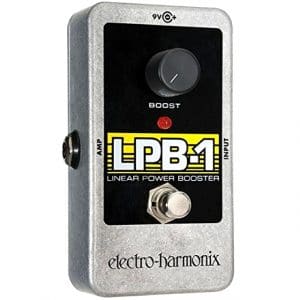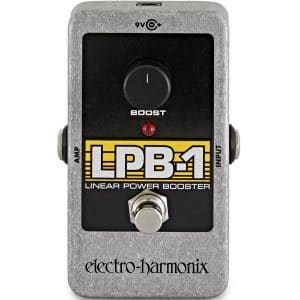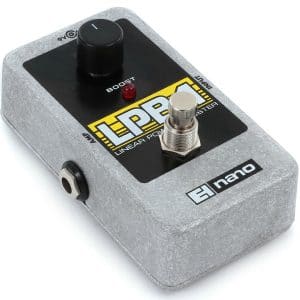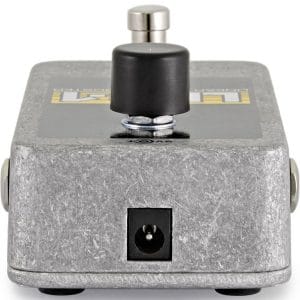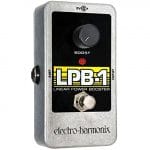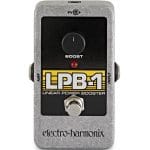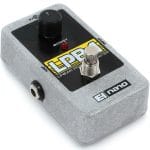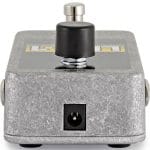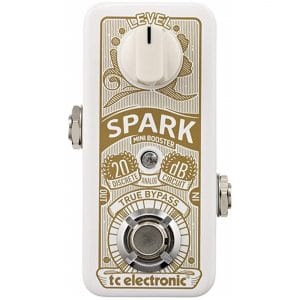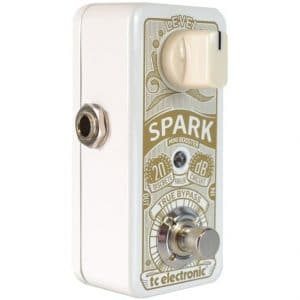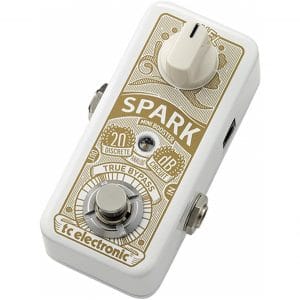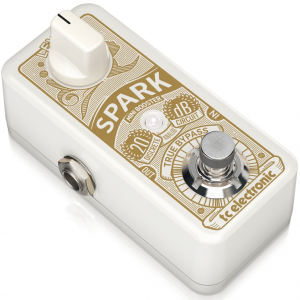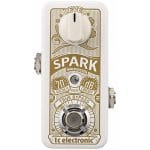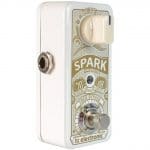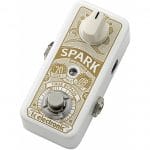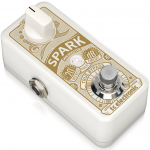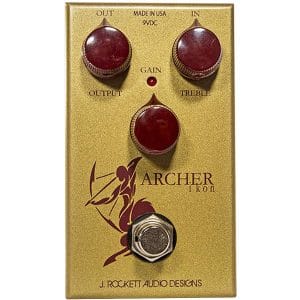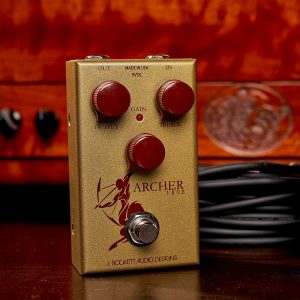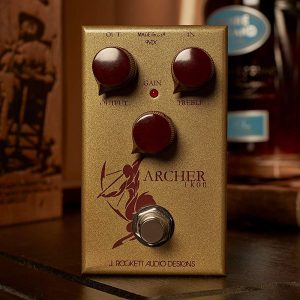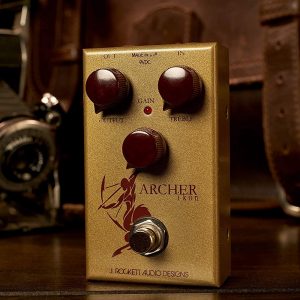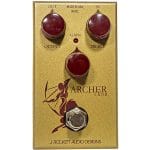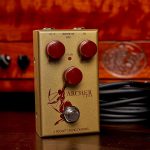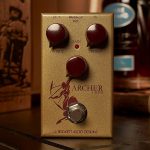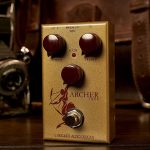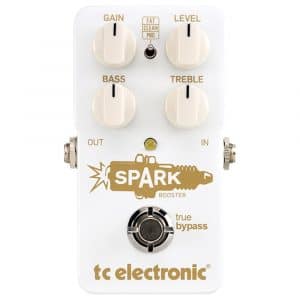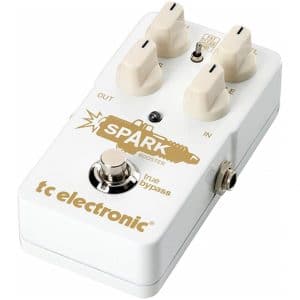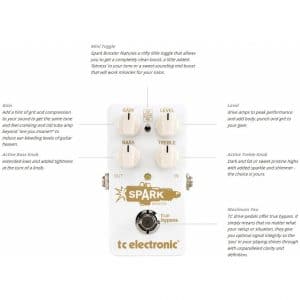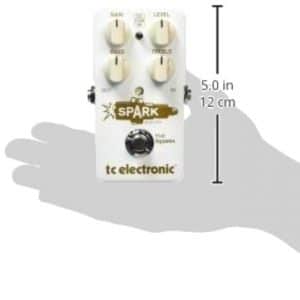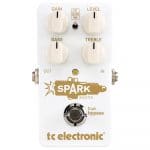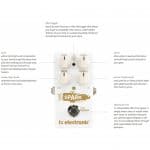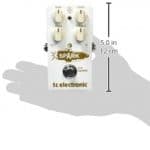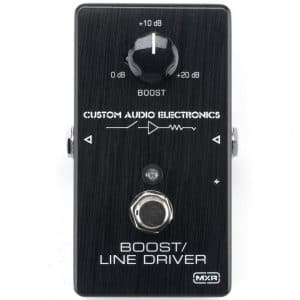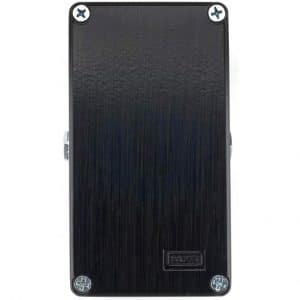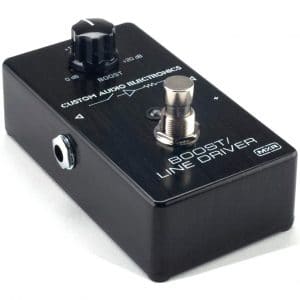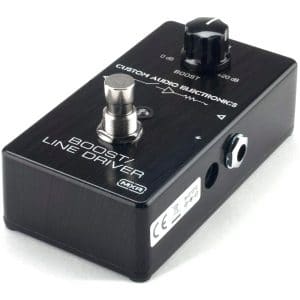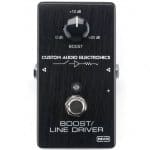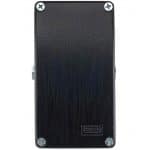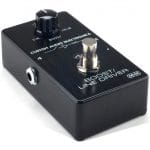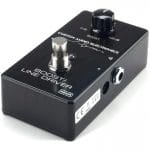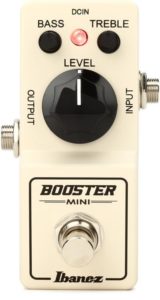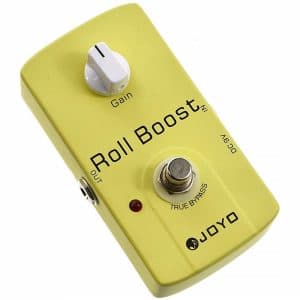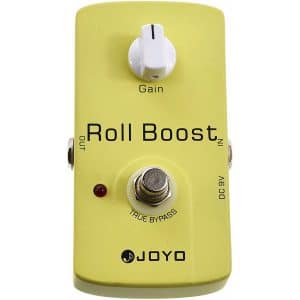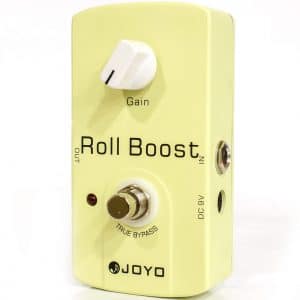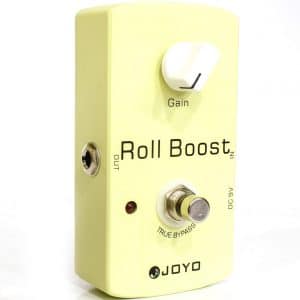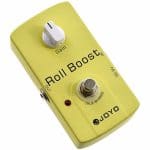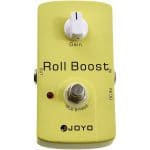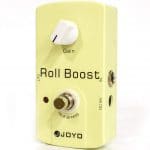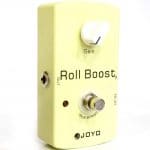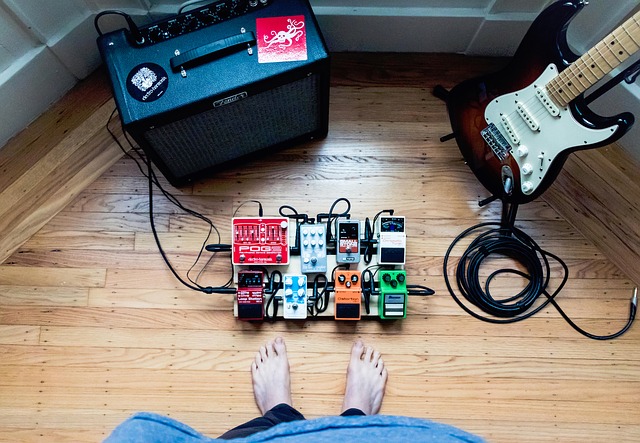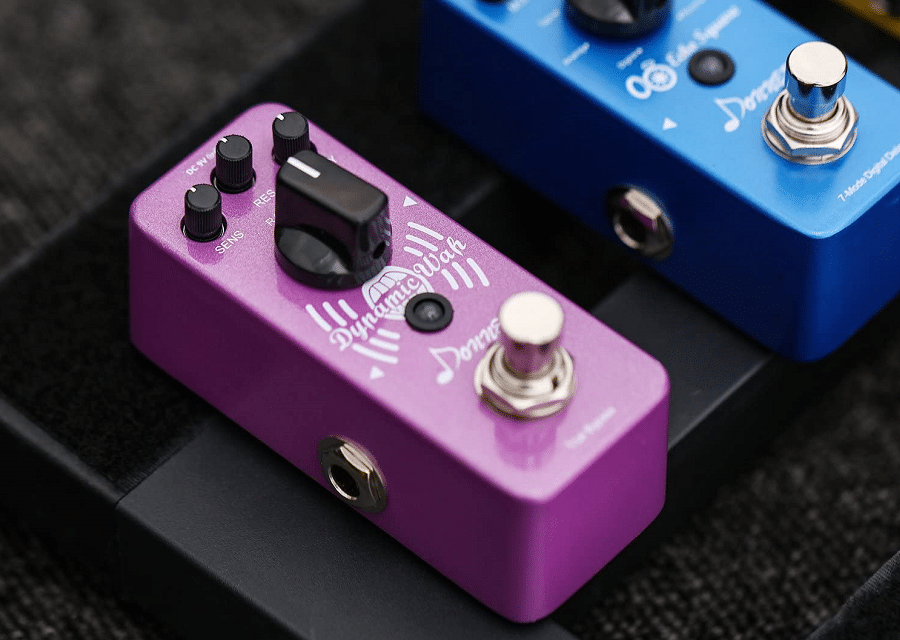How to find the best boost pedal?
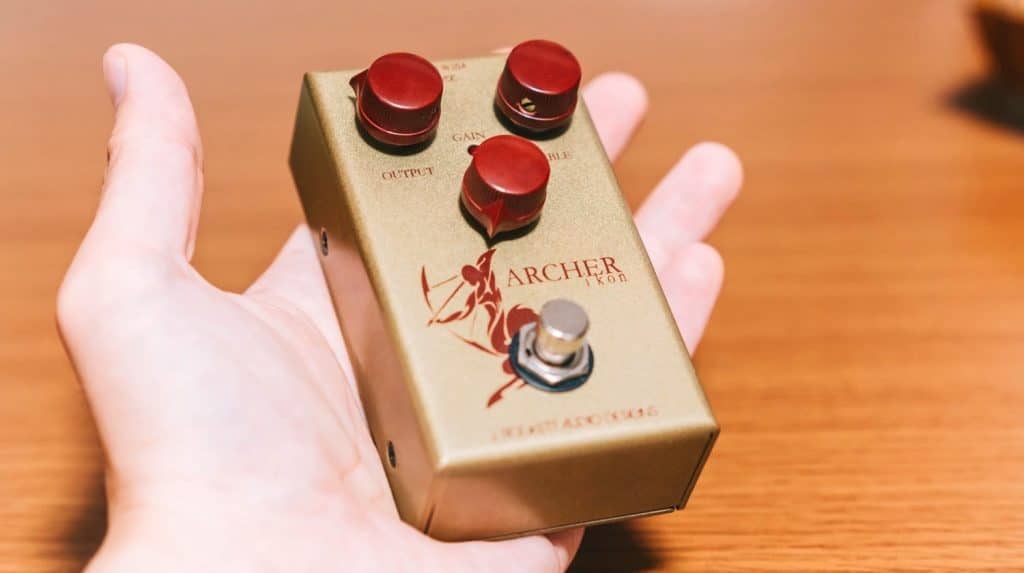
Before starting on this journey, it’s important to decide what you want from your booster pedal. It could be that you’re only looking for the most transparent gain you can find, or it could be that you’re looking for a little more versatility. Here, we will discuss the features like gain level, controls, bypass, power supply and even the construction of the unit. As we go through each section here, it’s a good idea to make a note of how important each feature is.
Gain level
You’re probably going to want to use your boost pedal for a specific reason, and you need to know how much you want your signal to be increased by. This increase in the volume is measured in decibels (dB).
The models we looked at here range from 14dB, which is offered by the Ibanez Boost Mini Pedal, and all the way up to 38dB of the Joyo JF-38 Roll Boost. It could be that you don’t want to drown out the rest of the band, and, therefore, don’t need the higher limit. 14dB is still enough to be able to lift the sound of your instrument above the crowd.
You shouldn’t get hung up on the gain figure too much. If you have a higher gain, but it colors the tone, then it’s useless.
This is why you should check the customers’ reviews to get an overall picture of how good the pedals are.
Controls
As you can see, the way that these pedals are controlled is different from one model to the next. The MXR M133 Micro Amp, for example, has one simple gain control, which could be perfect for your needs if that’s all that you’re looking for.
The TC Electronic Spark Booster, on the other hand, gives you four different knobs that are going to give you a higher level of control over what you are going. If you wanted to add low-gain overdrive, for example, then this is the way that you want to go.
To get the best boost pedal, you need to know what to expect from it in pair with your instrument.
While extra controls may seem useful, in some cases, they can only distract your attention if you have multiple effects in your chain.
True bypass vs. buffered bypass
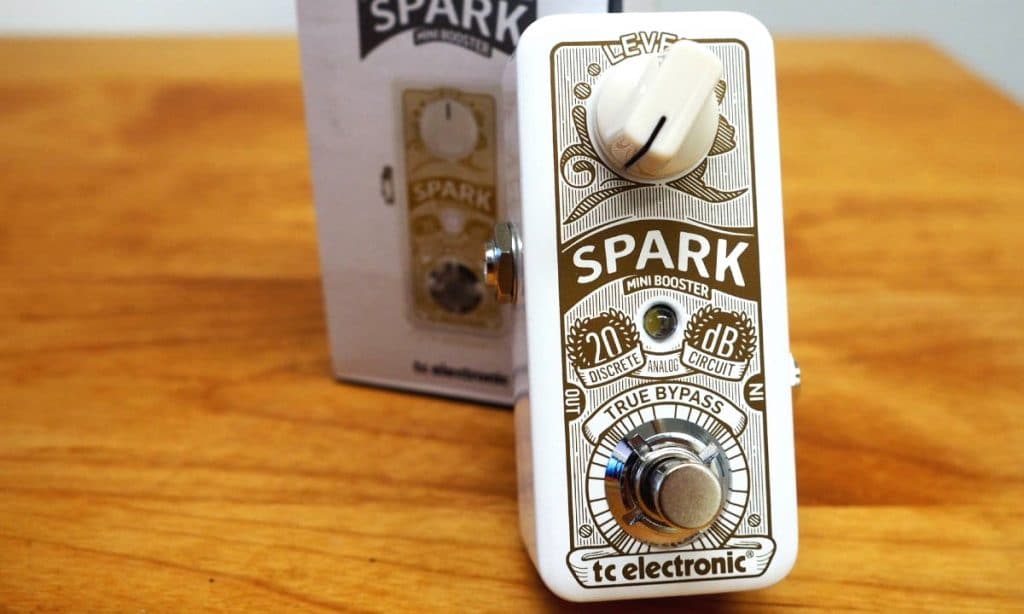
Maybe people will argue about which one is better when the truth is that they are just different. True bypass will help to give you that perfectly clear sound and work wonderfully with a short signal chain.
If you’re only using true bypass with a long cable, then this can drain your tone. With true bypass, it’s best to be as short as possible.
In contrast, a buffered pedal is ideal for longer cables and those who use more than two pedals. It will restore the signal strength before it gets to the amp. However, some guitarists don’t like the sound change they can provide.
If you want that crystal clear tone, a true bypass such as the one with the Donner Boost Killer could be the way to go.
Power supply
Which is better, using a battery or plugging an adapter? Well, the answer to that will depend on which one you prefer. A battery gives you a greater level of portability, but you also have to worry about it running out.
With an adapter, you’re not going to have any of these worries. The inconvenience comes from having to find a power source that can make your set-up trickier. There are boost pedals that offer you both, so you don’t have to commit to one option.
Size and construction
You want to make sure that your boost pedal is going to be able to give you good durability as equipment on the road can tend to be bashed around quite a lot. The Electro-Harmonix LPB-1 Linear Power Booster is the type you should be looking for as the die-cast metal used here is of the highest quality.
You also want to consider the size. If you want the highest level of portability, then you’d want a mini booster such as the Xotic EP Booster. This unit features premium quality build and impressive signal increase that not many might expect to get from a smaller model. That compact size will make it easier to carry and give you more space on your board.
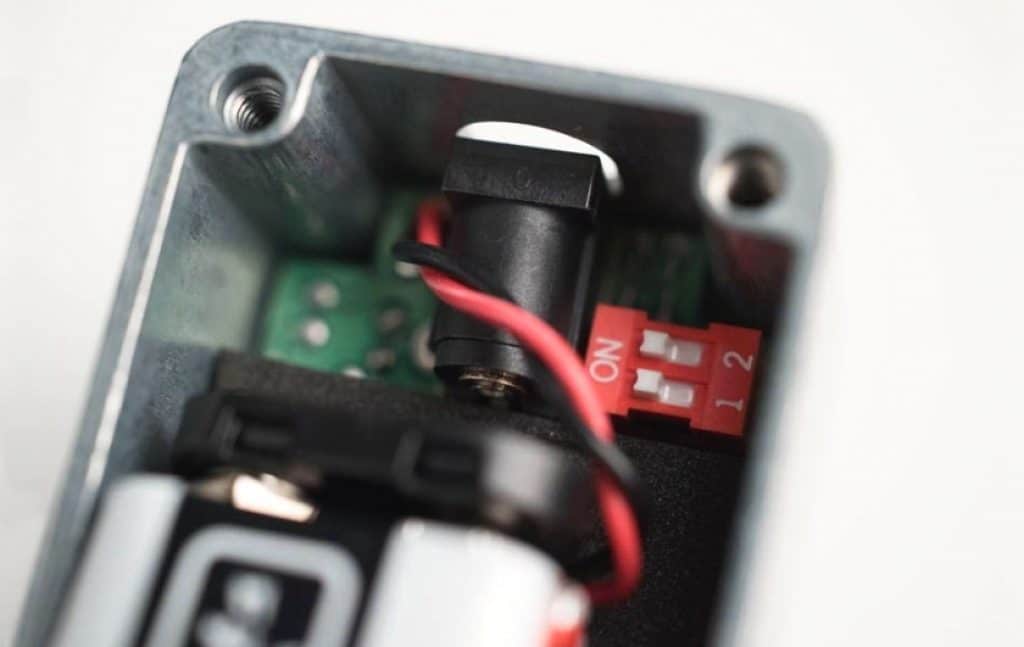
Prices
While it’s great to have a unit full of different features, it doesn’t really matter if a boost pedal is out of your price range. Here we look at the various price ranges for boost pedals.
If you don’t mind paying the premium price for a high-quality pedal, then the Xotic EP Booster at around $120 is the way to go. With this, you are getting that crisp sound with none of the negatives that can come with other pedals.
In the mid-range level, the MXR M133 Micro Amp at around $80 is an excellent option. This is a stylish unit with a transparent sound and an impressive level of gain. It may be more expensive than some models, but it still represents value for money because it allows you to make longer chains with it.
At the budget range, the Donner Boost Killer at around $30 is going to be a lot more affordable to some people. It will allow you to have excellent sound with true bypass, and you can adjust it as you like with four knobs.






